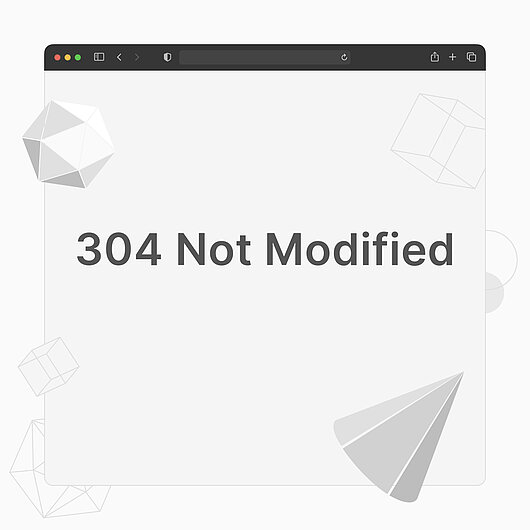- Why Us?
- Features
White Label
For SaaS Platforms & Agencies
Provide our complete analytics suite to your clients, directly within your own interface and with your/their own branding. Discover Analytics-as-a-Service and White Label Analytics. Great benefit, minimal effort.
- Pricing
- White Label
- Success Stories
- Partner
- ResourcesExpand Your Knowledge
304 Not Modified
TL;DR

A 304 Not Modified message is an HTTP response status code that most likely points to the fact that the user is being redirected to a cached version of a web resource (like a webpage), because there have been no modifications between the time of the caching and the time of the request. It does not influence user experience, except for the fact that the resource will load faster.
What Is a 304 Not Modified Message?
A 304 Not Modified message is an HTTP response status code, which, along with 301 Redirect and 302 Redirect, is part of the 3xx response status code category. This category deals with redirects, but in the case of the 304 Not Modified message, there is not an obvious redirection involved. That is because it refers to an implicit redirection to a cached version of the web resource you are trying to access.
A cached version is a version of your web resource, which is being stored on an intermediate system, for faster access and page loading time. The way it works is that the first time a user accesses a web resource (like a webpage), they will most likely see a live version of that resource. At the same time, if caching is enabled, some or all of the elements of that webpage are being downloaded as static resources on an intermediate server and even on the internet browser being used. The second time the user goes to the same page, if there have been no changes in the meantime, they will be redirected to the cached version of the resource, which will load a lot faster, since the elements have already been downloaded once.
In this context, the 304 Not Modified message is a response to a request, when there have been no updates to the resource after it has been cached. Therefore, the server will automatically send the user to the cached version.
How Does the 304 Not Modified Message Affect the User?
It doesn’t. There is nothing to do on the client side. Users may not even notice the 304 message and will likely not be aware they are viewing a cached webpage.

